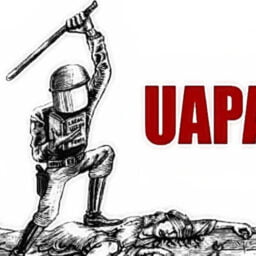INTRODUCTION
The case of National Insurance Company Ltd. v. Hindustan Safety Glassworks Ltd. & Anr. (2017)[1] is largely based on consumer rights and power. Every citizen living is in one way or the other is a consumer and therefore the importance of an act that deals with the same are colossal. The Consumer Protection Act of 1986 specifically deals with the issues in this area such as the protection of consumers, their rights, punishments to deal with the aforementioned issues, etc. Applying for a policy in an Insurance Company too comes under the vast umbrella of consumers and the aforementioned case highlights a similar situation. On the 29th August 1990, the Respondent, Hindustan Safety Glassworks Ltd. had two policies with the National Insurance Company, the appellant for an amount of 49 Lakhs and 5.7 Crores, respectively. The first policy covered the risk of buildings, offices, and canteens in the office premises whereas the second one covered the risk of machines, goods, finished and semi-finished goods and other fixtures in the factory premises. In the beginning, the policy’s term was for one year only but it was later renewed for another year in 1992. As Calcutta, the city where the premises of the respondent were located, witnessed heavy rains on the 6th of August, 1992, the water got accumulated inside the factory thereby damaging the raw materials, goods and furniture of the factory. Due to these damages suffered, the insured filed claims on the 7th and the 8th of August, 1992 appealing a total amount of about fifty-two lakhs.
The insurance company appointed NT Kothari and Company to inspect the claims made after the heavy rains, on the 24th of September 1992. The report of the aforementioned inspection was submitted in November 1993 that the amount that should be claimed would be 24 Lakhs. The Insurance Company did not find the findings of the report clear so it appointed another surveyor for the same. Season Services (WB) Private Ltd. was appointed post this. The second report was submitted on the 23rd of November 1994 concluding the loss value to be about 26 lakhs. After an addendum passed (rundown of products and different properties that should be included request to guarantee a sum and eliminating different materials which ought not to be added for the case) on 10 February 1995, the add up to be asserted was decreased to rupees 24 lakhs. However, even after giving adequate time, the insurance company could not hand over the money claimed to the insured. The notice regarding this was in 1996 but the reply was sent after five years after a petition was filed in the National Commission. The National Commission responded in the favour of the respondent. Subsequently, the aforementioned judgment was further appealed in the Supreme Court. The complaint was time-barred because it was filed on August 13, 1996, although the loss/damage to the insured assets occurred in August of 1992. “The alleged loss was caused by the accumulation of dust and moisture on the stocks that were left unattended due to a factory lockout that began on May 3, 1991, rather than by inundation or flooding.” Neither of the two survey results may be used to support payment of the claimed sum. Among other issues, the most imperative legal issue was whether the complaint filed to the National Commission by the respondent was valid or barred under the provision of Section 24A[2] of the Consumer Protection Act, 1986 or not.
THE CONSUMER PROTECTION ACT, 1986: AN OVERVIEW
Also known as COPRA, the Consumer Protection Act was enacted in the year 1986 to safeguard the interests and rights of the consumers in the country. The act was eventually supplanted by the Consumer Protection Act of 2019. The purpose of the act is to safeguard the rights of the consumers and address their grievances. The act after being passed in October came into force on the 24th December 1986. The Consumer Protection Act of 1986 specifically deals with the issues in this area such as the protection of consumers, their rights, punishments to deal with the aforementioned issues, etc. Applying for a policy in an Insurance Company too comes under the vast umbrella of consumers and the aforementioned case highlights a similar situation. The act is often referred to as the Magna Carta[3] in the field of Consumer Protection since it protects the consumers by checking the malpractices. The act has also led to the creation of various consumer forums as well as appellate courts across the country. The act has had a significant impact on the empowerment of consumers.
SECTION 24A OF THE CONSUMER PROTECTION ACT, 1986
Section 24A of the act talks about the limitation period for the complaint to be filed in a consumer forum. The section prescribes that the forums (District Forum, State Commission or National Commission) depending on the case shall not consider a complaint if it has been filed after two years after the arising of the dispute. In the case of Anshul Aggarwal v. New Okhla Industrial Development National Law Portal[4], it was observed that it is imperative to keep in mind the limitation period prescribed by the act. In the case of R.B Ramalingam v. Bhavaneshwari[5], it was observed that the court has to inspect the postponement of the petition being filed is properly explained and it is a very basic principle that needs to be followed.
APPLICABILITY
A complaint will not be accepted by the District Forum, the State Commission, or the National Commission “unless it is filed within two years after the date on which the cause of action arose. However, if the complainant convinces the Forum/Commission, as the case may be, that he has good grounds for not registering the complaint within two years, the complaint may be considered by the Forum/Commission once the reasons for the delay are recorded.”
ABOUT THE CASE[6]
THE SPECIFICS OF THE CASE
On the 29th August 1990, the Respondent, Hindustan Safety Glassworks Ltd. had two policies with the National Insurance Company, the appellant for an amount of 49 Lakhs and 5.7 Crores, respectively. The first policy covered the risk of buildings, offices, and canteens in the office premises whereas the second one covered the risk of machines, goods, finished and semi-finished goods and other fixtures in the factory premises. In the beginning, the policy’s term was for one year only but it was later renewed for another year in 1992. As Calcutta, the city where the premises of the respondent were located, witnessed heavy rains on the 6th of August, 1992, the water got accumulated inside the factory thereby damaging the raw materials, goods and furniture of the factory. Due to these damages suffered, the insured filed claims on the 7th and the 8th of August, 1992 appealing a total amount of about fifty-two lakhs. The insurance company appointed NT Kothari and Company to inspect the claims made after the heavy rains, on the 24th of September 1992. The report of the aforementioned inspection was submitted in November 1993 that the amount that should be claimed would be 24 Lakhs. The Insurance Company did not find the findings of the report clear so it appointed another surveyor for the same. Season Services (WB) Private Ltd. was appointed post this. The second report was submitted on the 23rd of November 1994 concluding the loss value to be about 26 lakhs.
After an addendum passed (rundown of products and different properties that should be included request to guarantee a sum and eliminating different materials which ought not to be added for the case) on 10 February 1995, the add up to be asserted was decreased to rupees 24 lakhs. However, even after giving adequate time, the insurance company could not hand over the money claimed to the insured. The notice regarding this was in 1996 but the reply was sent after five years after a petition was filed in the National Commission. The National Commission responded in the favour of the respondent. Subsequently, the aforementioned judgment was further appealed in the Supreme Court. The complaint was time-barred because it was filed on August 13, 1996, although the loss/damage to the insured assets occurred in August of 1992. The alleged loss was caused by the accumulation of dust and moisture on the stocks that were left unattended due to a factory lockout that began on May 3, 1991, rather than by inundation or flooding. Neither of the two survey results may be used to support payment of the claimed sum.
THE RESPONDENT’S SIDE IN FRONT OF THE NATIONAL COMMISSION
The insured sought an amount of 52.32 lakhs, plus Rs. 1.81 lakhs in expenses incurred to mitigate the loss, as well as an interest rate of 18 per cent per annum on the amount from December 6, 1992. The appellant’s first point for the insured’s claim is condition 6(ii) of the policy, which states that the period for filing a claim is 12 months from the time of the incident. A condition that comes with such a provision stipulates that if the insured does not receive the insurance sum, it must be filed in court within 12 months after the incidence. As a result, the matter was only brought to court in 1996, even though the incident occurred in 1992. Besides the foregoing, the consumer filed the action after four years, but Section 24A of the Consumer Protection Act allows for a sufficient period if there is a delay. As a result, the appellant questioned the complaint’s validity before the National Commission. The insurance company claimed that the insured’s loss was caused by dust and moisture accumulating on the stock that had been left untreated since 3 May 1991 because of a lockout.
THE PETITIONER’S SIDE IN FRONT OF THE NATIONAL COMMISSION
The skilled counsel appearing on behalf of the petitioner claims that the insurance company’s actions caused the delay in filing the petition. According to the facts, the insurance company chose two companies, one after the other, to conduct a study, which caused the insured to wait two years to file a lawsuit. The insurance company then passed an addition the next year, which must be taken into account when determining the amount to be claimed. The first months of 1996 were spent waiting for a response to the notice of April 22. As a result, the delay in bringing the claim is valid, and the National Commission has jurisdiction over such matters. The aim of the two survey reports for dealing with a single incidence was then addressed by the responder. The 1st surveyor was not a bona fide surveyor and had no authority to submit any report about the damage or loss, according to the reports submitted. The National Commission, however, has dismissed the first survey report and is considering the second. However, there is a chance that the report will be changed because the insurance company consulted with another officer about the case, but the National Commission accepted the second report with the addendum.
JUDGEMENT
After evaluating all of the arguments, the National Commission issued a payment order to the National Insurance Company. It ordered the payment of Rs. 21,05,803.89 plus interest at the rate of 9% per annum starting on May 11, 1995. The interest was computed from 1995 since the insurance company took possible steps in estimating the amount to be claimed and employed a surveyor, and the surveyor’s second report was filed in 1994, and the amendment was passed in 1995. A total of Rs. 20,000 was also rewarded in addition to all of this. The Supreme Court was summoned to hear an appeal. By refusing the amount due, the petitioner made his case. However, the Supreme Court, after hearing the arguments, dismissed the petition and affirmed the National Commission’s decision.
CONCLUSION
It is obvious from the preceding decision that the judiciary upholds the Consumer Protection Act’s maximum protection for clients. At the same time, it penalises the client if he asserts inaccurate information or makes a complaint against the maker. Though the law is for the citizens, by the people, it provides equal protection to consumers and manufacturers, analysing the truth that all customers are manufacturers and all manufacturers are customers. As a result of the above-mentioned decision, the court determined that the insured made a policy for the materials for any situation and that the policy did not mention any specific disaster that would occur for the damage of goods and other materials that would allow the insured to claim the insurance amount.
Author(s) Name: Khushi Saxena (Symbiosis International University, Pune)
References:
[1](2017) 5 SCC 776
[2]Section 24A in the Consumer Protection Act, 1986.
[3]“The Magna Carta also known as the Great Charter is a contract guaranteeing English political liberty that was negotiated and signed by King John at Runnymede, a meadow near the River Thames. It established the foundation for individual rights in Anglo-American law by declaring the sovereign to be subject to the rule of law and chronicling the liberties.”
[4](2011) CPJ 63
[5](2009) CLT 188
[6](2017) 5 SCC 776
















